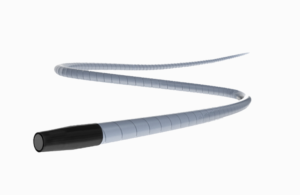
The XO Cross 14 Microcath was used during complex peripheral vascular intervention to facilitate guidewire support at the Lehigh Valley Vascular Institute.
“The 1:1 torque of the XO Cross provided new levels of control and responsiveness during the procedure,” Dr. James McGuckin, who performed the procedure, said in a news release. “The ultra-large lumen and shapeable distal tip allowed for better imaging at the target site as well as directional control for accessing branch anatomy with the wire.”
Transit Scientific’s XO Cross Microcatheter platform delivers new levels of pushability, traceability, flexibility and torque response to access challenging lesions, according to the company. It is made of non-tapered metal-alloy and polymer construction to help deliver high fatigue resistance in tough calcium and plaque that is associated with late-stage peripheral artery disease and critical limb ischemia.
“The XO Cross took a beating during the case and held its own. It has excellent fatigue resistance, which is needed in PAD and CLI cases,” McGuckin said.
The company is currently commercializing a 2Fr XO Cross 14 Microcath, 2.6Fr XO Cross 18 Microcath and a 3.9Fr XO Cross 35 Suport catheter for use in standard 0.014 in., 0.018 in. and 0.035 in. guidewires in 90 cm, 135 cm, 150 cm and 175 cm working lengths.
“Our team is thrilled to launch the first non-tapered peripheral Microcath, which paves the way for the rest of the XO Cross platform,” president and CEO Greg Method said. “These early CLI cases provided a great opportunity to demonstrate the importance and potential impact of the XO Cross technology.”
“The non-tapered design allowed for a triaxial approach while tackling a severely calcified chronic total occlusion (CTO) during one of the cases,” Method said. “Dr. McGuckin was able to successfully cross the CTO using the increased pushability and flexibility provided by the non-tapered design of the XO Cross catheter platform.”
